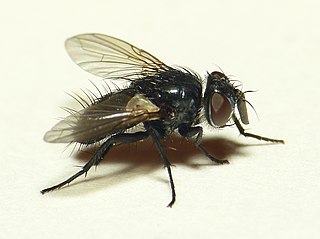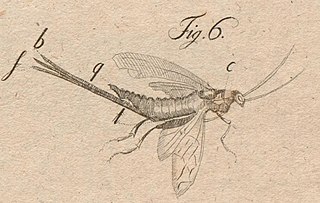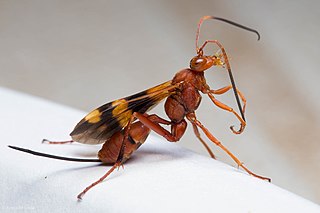
The Ichneumonidae, also known as ichneumon wasps, ichneumonid wasps, ichneumonids, or Darwin wasps, are a family of parasitoid wasps of the insect order Hymenoptera. They are one of the most diverse groups within the Hymenoptera with roughly 25,000 species described as of 2016. However, this likely represents less than a quarter of their true richness as reliable estimates are lacking, along with much of the most basic knowledge about their ecology, distribution, and evolution. It is estimated that there are more species in this family than there are species of birds and mammals combined. Ichneumonid wasps, with very few exceptions, attack the immature stages of holometabolous insects and spiders, eventually killing their hosts. They thus fulfill an important role as regulators of insect populations, both in natural and semi-natural systems, making them promising agents for biological control.

John Obadiah Westwood was an English entomologist and archaeologist also noted for his artistic talents. He published several illustrated works on insects and antiquities. He was among the first entomologists with an academic position at Oxford University. He was a natural theologian, staunchly anti-Darwinian, and sometimes adopted a quinarian viewpoint. Although he never travelled widely, he described species from around the world on the basis of specimens, especially of the larger, curious, and colourful species, obtained by naturalists and collectors in England.
Sievert Allen Rohwer was an American entomologist who specialized in Hymenoptera. He was a graduate of the University of Colorado. At the time of his death, Rohwer was serving as the Coordinator Defense Activities for the Agricultural Research Administration within the U.S. Department of Agriculture. Rohwer worked for the USDA from 1909 until his death.
Ateloglossa is a genus of flies in the family Tachinidae.
Siphosturmia is a genus of flies in the family Tachinidae.
Lixophaga is a genus of flies in the family Tachinidae.

Procecidochares is a genus of tephritid or fruit flies in the family Tephritidae.

Exoristinae is a subfamily of flies in the family Tachinidae. Most species are parasitoids of caterpillars.

Blondeliini is a tribe of parasitic flies in the family Tachinidae. Larvae are parasitoids of other insects, mostly beetles and caterpillars. Although nearly cosmopolitan, its greatest diversity is in the New World and especially in South America.
Diadegma acronyctae is a wasp first described by William Harris Ashmead in 1896. No subspecies are listed.
Diadegma chrysostictos is a wasp first described by J.F. Gmelin in 1790. No subspecies are listed.
Diadegma compressum is a wasp first described by Cresson in 1864. No subspecies are listed.
Diadegma comptoniellae is a wasp first described by Henry Lorenz Viereck in 1925. No subspecies are listed.
Diadegma discoocellellae is a wasp first described by Henry Lorenz Viereck in 1911.

Polycyrtus is a genus of ichneumon wasps in the subfamily Cryptinae. There are more than 160 species of Polycyrtus, found in the Americas.
Polycyrtus vierecki is a species of wasp in the subfamily Cryptinae. It is found in Peru.

Xeris is a genus of horntails found in North America and Eurasia. Achille Costa circumscribed the genus in 1894.

Trogus is a genus of parasitoid wasp found in the Holarctic and Neotropic regions. It is placed in the subfamily Ichneumoninae and the tribe Ichneumonini. Trogus species are parasites of larvae and pupae of the swallowtail butterfly family, Papilionidae. The genus consists of twelve extant and one extinct species.

Compsocryptus is a genus of ichneumon wasps in the family Ichneumonidae.

Megischus is a genus of crown-wasps in the parasitoid family Stephanidae. There are over 90 species globally distributed throughout the Neotropical, Palearctic, Afrotropical, Oriental, Australasian, and Oceanian zoogeographical regions.









